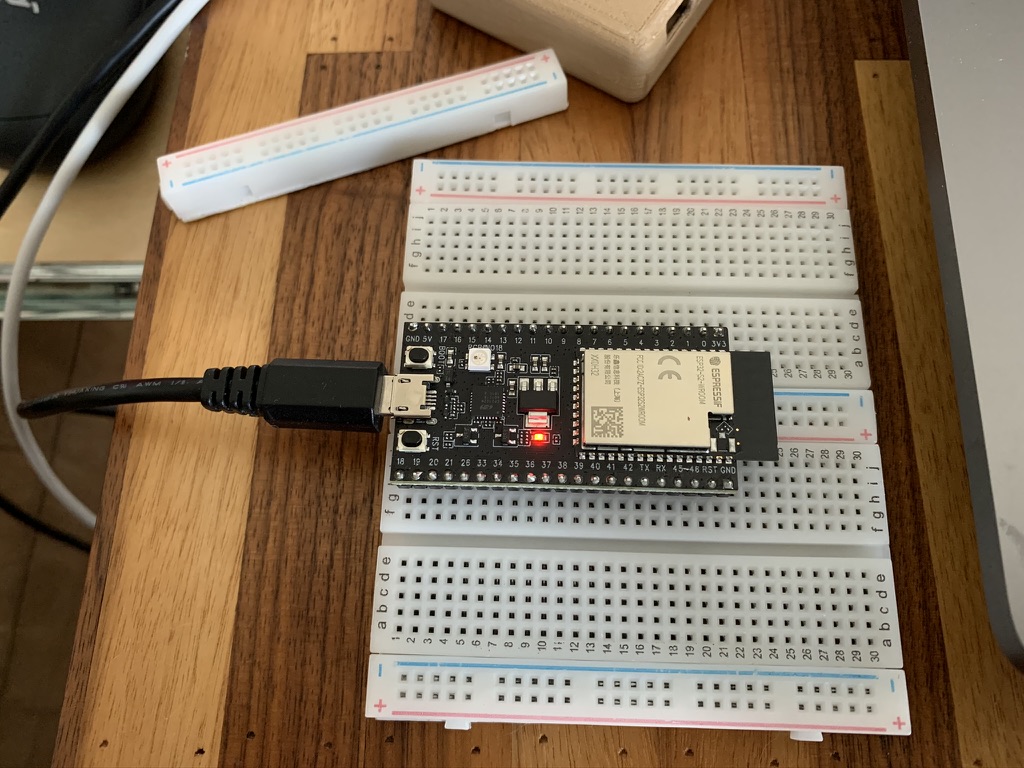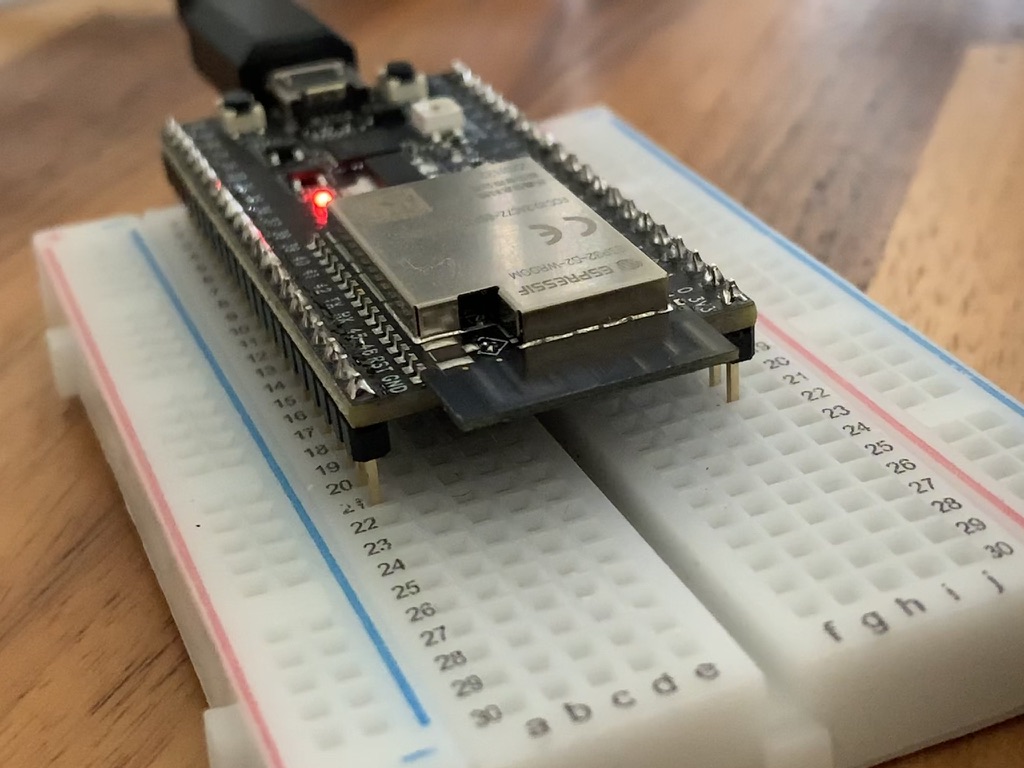Just received my ESP32-S2-SAOLA-1M development board today! Appears that it comes loaded with a red-green-blue cycling app, showing off the “neopixel” peripheral included on the board.
The serial output when you first run the device from the factory shows the following:
ESP-ROM:esp32s2-rc4-20191025
Build:Oct 25 2019
rst:0x1 (POWERON),boot:0x8 (SPI_FAST_FLASH_BOOT)
SPIWP:0xee
mode:DIO, clock div:2
load:0x3ffe8100,len:0x4
load:0x3ffe8104,len:0x18f0
load:0x40050000,len:0x1678
load:0x40054000,len:0x2100
entry 0x40050334
[0;32mI (49) boot: ESP-IDF v4.2-dev-461-g6fd4904-dirty 2nd stage bootloader[0m
[0;32mI (49) boot: compile time 17:09:57[0m
[0;32mI (49) boot: chip revision: 0[0m
[0;32mI (52) boot.esp32s2: SPI Speed : 40MHz[0m
[0;32mI (57) boot.esp32s2: SPI Mode : DIO[0m
[0;32mI (62) boot.esp32s2: SPI Flash Size : 2MB[0m
[0;32mI (66) boot: Enabling RNG early entropy source...[0m
[0;32mI (72) boot: Partition Table:[0m
[0;32mI (75) boot: ## Label Usage Type ST Offset Length[0m
[0;32mI (83) boot: 0 nvs WiFi data 01 02 00009000 00006000[0m
[0;32mI (90) boot: 1 phy_init RF data 01 01 0000f000 00001000[0m
[0;32mI (98) boot: 2 factory factory app 00 00 00010000 00100000[0m
[0;32mI (105) boot: End of partition table[0m
[0;32mI (109) esp_image: segment 0: paddr=0x00010020 vaddr=0x3f000020 size=0x05454 ( 21588) map[0m
[0;32mI (124) esp_image: segment 1: paddr=0x0001547c vaddr=0x3ffbd740 size=0x01c2c ( 7212) load[0m
[0;32mI (129) esp_image: segment 2: paddr=0x000170b0 vaddr=0x40024000 size=0x00404 ( 1028) load[0m
[0;32mI (136) esp_image: segment 3: paddr=0x000174bc vaddr=0x40024404 size=0x08b5c ( 35676) load[0m
[0;32mI (157) esp_image: segment 4: paddr=0x00020020 vaddr=0x40080020 size=0x139a8 ( 80296) map[0m
[0;32mI (179) esp_image: segment 5: paddr=0x000339d0 vaddr=0x4002cf60 size=0x007d4 ( 2004) load[0m
[0;32mI (186) boot: Loaded app from partition at offset 0x10000[0m
[0;32mI (186) boot: Disabling RNG early entropy source...[0m
[0;32mI (188) cache: Instruction cache : size 8KB, 4Ways, cache line size 32Byte[0m
[0;32mI (196) cpu_start: Pro cpu up.[0m
[0;32mI (199) cpu_start: Single core mode[0m
[0;32mI (204) heap_init: Initializing. RAM available for dynamic allocation:[0m
[0;32mI (211) heap_init: At 3FFBD734 len 0000000C (0 KiB): D/IRAM[0m
[0;32mI (217) heap_init: At 3FFBFB28 len 0003C4D8 (241 KiB): D/IRAM[0m
[0;32mI (223) heap_init: At 3FFFC000 len 00003A10 (14 KiB): DRAM[0m
[0;32mI (230) cpu_start: Pro cpu start user code[0m
[0;32mI (287) spi_flash: detected chip: generic[0m
[0;32mI (288) spi_flash: flash io: dio[0m
[0;33mW (288) spi_flash: Detected size(4096k) larger than the size in the binary image header(2048k). Using the size in the binary image header.[0m
[0;32mI (298) cpu_start: Starting scheduler on PRO CPU.[0m
[0;32mI (304) example: esp32s2 IDF_test version: 1.01[0m
[0;32mI (304) example: esp_idf version:8.2.0[0m
[0;32mI (314) example: LED Rainbow Chase Start in GPIO 18[0m
red...
green...
blue...
red...
green...
blue...
Looking forward to building new projects using the ESP32-S2. While I love the tried and true ESP32-PICO-D4, I’m hopeful this new offering will result in more affordable IoT nodes and products.


